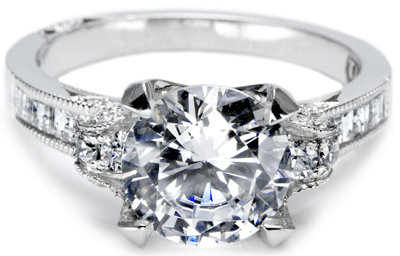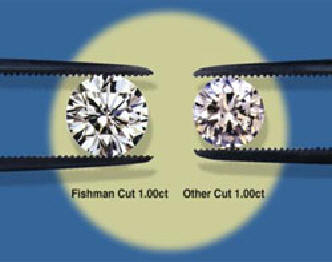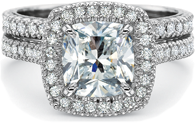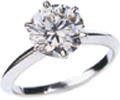Free Shipping & 30 Day Return Policy
CALL 1-212-869-0085
Your Best Wholesale Natural Loose Diamond Source!
Loose Diamonds
Diamond Guides
- The 4 C's and More
- Diamond Shape
- Diamond Cut
- Diamond Color
- Diamond Clarity
- Diamond Carat Size
- GIA Certification
- GIA Cut Grades
Jewelry Guides
- Engagement Ring Guide
- Diamond Tips
- Caring For Your Jewelry
- Tips on Getting Her Ring Size
- How To Build Your Fine Diamond Jewelry Wardrobe
- Diamond & Jewelry Appraisals
- Branded Diamonds
Education Videos
Design Your Engagement Ring
A. Fishman Difference
- Direct Diamond Prices
- Loose Diamond Manufacturer
- A+ Rating From BBB
- Customer Testimonials
- 100% Money Back Guarantee
- FREE FedEx Overnight Shipping
- Lifetime Warranty
- 2% Discount for Bank Wires
- Why No "Shopping Cart"
Expert Guidance
- Expert Guidance
- 212-869-0085
Pretty Diamonds
Are you are looking for that special diamond and want to be sure that not only does it have a good grade and certificate, but also that it is a Pretty Diamond?
Not all certificated diamonds are pretty, including diamonds with "ideal," "excellent," or "very good" cut grades. The certificate is only the place to start from. There is much more to understand. Let me briefly explain, but please do not hesitate to call me, Josh Fishman, if you would like to discuss this most important issue in greater depth.
As you probably are aware, prices for diamonds of the same size and grade can vary substantially, sometimes by 20% or more. Some of the best known on-line diamond retailers have many diamonds listed with the same grade and cut with substantially different prices. When comparing a grade and a price it can often seem as if the lower priced diamond is a better "deal" than the higher priced diamond. A closer examination will usually reveal that this is not the case.

What do we mean by a Pretty Diamond?
When you consider purchasing a diamond you should be looking for a "Pretty Diamond!" If the diamond is Pretty (as I am about to define that term for you), all the other factors of the certificate's statistics will usually fall into place within the appropriate ranges. But how can you tell if a diamond is Pretty? You can't if all you have to rely on is the bare bones of the certificate. You need expert guidance.
You should be getting advice about a diamond you may be considering from the principal of the diamond company who selected the diamond and invested his company's money in that diamond. It is not enough to speak to a "jewelry consultant" or "diamond associate" who can only tell you what the certificate says. An on-line retailer or any other seller who does not own the diamonds he is offering cannot help you. A. Fishman & Son owns all of its diamonds so we can describe them to you, not just repeat the certificate's statistics. We want to assist you in this important understanding and also hope that you will find that A. Fishman & Son is the source from whom you should buy your diamond.
Although I would prefer to speak to you personally, let me describe the four major characteristics of a diamond which must be met for A. Fishman & Son to consider the diamond a Pretty Diamond; one worthy of our investment and your serious consideration. (If you would like to read about these issues in greater detail, please go to Beyond The 4 C's: What you should really know before you buy a diamond!)
1. The physical size of the diamond in millimeters has to reflect what a well cut diamond should look like.
 For example, a 1.00 carat round diamond should measure approximately 6.5mm in diameter, a 1.50ct should measure around 7.5mm, a 2.00ct should measure around 8.1-8.2mm, and so on. If you see a diamond listed on line in the 1.00ct size which only measures 6.2-6.3mm (or smaller), you should not buy it! That diamond doesn't look any larger than a well cut 0.80-0.90ct diamond. This also applies to 1.50ct diamonds which measure 7.2 or 7.3mm.
For example, a 1.00 carat round diamond should measure approximately 6.5mm in diameter, a 1.50ct should measure around 7.5mm, a 2.00ct should measure around 8.1-8.2mm, and so on. If you see a diamond listed on line in the 1.00ct size which only measures 6.2-6.3mm (or smaller), you should not buy it! That diamond doesn't look any larger than a well cut 0.80-0.90ct diamond. This also applies to 1.50ct diamonds which measure 7.2 or 7.3mm.
These diamonds may have a good grade on paper, even a terrific cut grade and a "great price" but it is not a diamond we would ever recommend to our private cutsomers.
The same factor applies to fancy shaped diamonds with the additional requirement that the diamond's shape has to be right, not just its dimensions.
See The A. Fishman & Son Cut Diamond

2. The diamond has to be brilliant.

Not only must the diamond look its weight, it must be brilliant and scintillating. Just because the diamond has an "excellent," "very good," or "ideal" (or "Signature-Ideal") cut label, does not mean that it was cut properly. Many diamonds whose dimensions are too small have such labels. Some diamonds which don't "measure up" can be very brilliant. But these diamonds are very thick in the girdle, thereby allowing the angles of the diamond to still reflect light pretty well. However, the diamond still looks too small and is not something which you should consider.
3. The inclusions in the diamond have to be pleasing to the eye when looked at under magnification.
 Even in VS clarity diamonds, and especially in SI clarities, the character and type of inclusions have a tremendous impact on the desirability of the diamond as an investment. All diamonds with the same clarity grades are not equally desirable. An SI1 with some small white feathers on the side is a more desirable (and less expensive) diamond than a VS2 which may have a single black inclusion in the center. When you look inside the diamond, you have to feel that the inclusions are pleasing and don't shock your eye.
Even in VS clarity diamonds, and especially in SI clarities, the character and type of inclusions have a tremendous impact on the desirability of the diamond as an investment. All diamonds with the same clarity grades are not equally desirable. An SI1 with some small white feathers on the side is a more desirable (and less expensive) diamond than a VS2 which may have a single black inclusion in the center. When you look inside the diamond, you have to feel that the inclusions are pleasing and don't shock your eye.
4. There are other characteristics which cause a diamond to appear to be priced as a "bargain" but which are undesirable.
For example, some diamonds which have great "labels" are also undesirable because of their strong or very strong fluorescence. Stay away from these diamonds. They will be undesirable in the future if you ever want to trade in the diamond.
Other diamonds are undesirable because of significant extra facets or naturals. The polish and symmetry and cut grades of such diamonds can be "labeled" very good or even excellent and still have these characteristics. You can't tell from the certificate. You have to speak to someone who can look at the diamond for you and tell you about it.
And finally, two equal size diamonds with the identical grades may be very different if they are graded by different Gemological laboratories. The Gemological Institute of America (GIA) is a much stricter grading laboratory than the European Gemological Laboratory (EGL). Therefore, the EGL graded diamond will never be as good a quality as the GIA graded diamond. When you see the price differences between two "equal" diamonds from these two different laboratories, don't be fooled into thinking that the EGL diamond is just the same diamond at a lower price. It is an inferior diamond.
In Conclusion
At A. Fishman & Son we will guide you so that you only purchase a Pretty Diamond. That is what gives you real value for your money: a diamond which has the right measurements, brilliance, pleasant inclusions and is finished properly without the undesirable characteristics I referred to above. We won't sell you anything else! There are diamonds in our inventory that we will advise you NOT to purchase. Some of these diamonds are better suited to our retail jewelry store customer who needs a "price point" more than he needs a pretty diamond. We would not sell them to our private clients.
When you take all of these factors into consideration you will see that A. Fishman & Son is the diamond source you should be speaking to about your important purchase.
We invite you to call at 212-869-0085 or e-mail regarding any questions you may have, so that we can assist you in the selection of your best-choice diamond.
Loose Diamonds
Shapes of Diamonds
Diamond Videos-New
About our Loose Diamonds
Perfect Diamonds
Pretty Diamonds
Round Cut
Princess Cut
Cushion Cut
Radiant Cut
Emerald Cut
Asscher Cut
Pear Shape
Oval Shape
Marquise Shape
Heart Shape
Diamond Jewelry
Brooches
Bracelets
Earrings
Engagement
Necklaces and Pendants
Wedding Rings
Custom Designed Jewelry
Diamond Guides
Diamond Guide - The 4 C's
Ethics of Lab-Grown Diamonds
Purchase: Beyond the Four C's
Diamond Guide Videos
Engagement Ring Guide
Understanding GIA Certificates
Understanding GIA Cut Grades
Pretty Diamonds
Diamond Clarity Enhancements
Conflict Free Diamonds
Identifying Fake Diamonds
Diamond Tips
Diamond Jewelry Appraisals
Diamond & Jewelry Care
Gift Giving
Beyond the 4 C's
Jewelry and Diamonds to Wear for a Lifetime - Not Just a Season!™
 A. Fishman & Son • 580 Fifth Avenue, Ste 402 • New York, NY 10036 • 212-869-0085
A. Fishman & Son • 580 Fifth Avenue, Ste 402 • New York, NY 10036 • 212-869-0085
Copyright © 2011-2022 A.Fishman & Son. All Rights Reserved. Website by YLWConsulting




